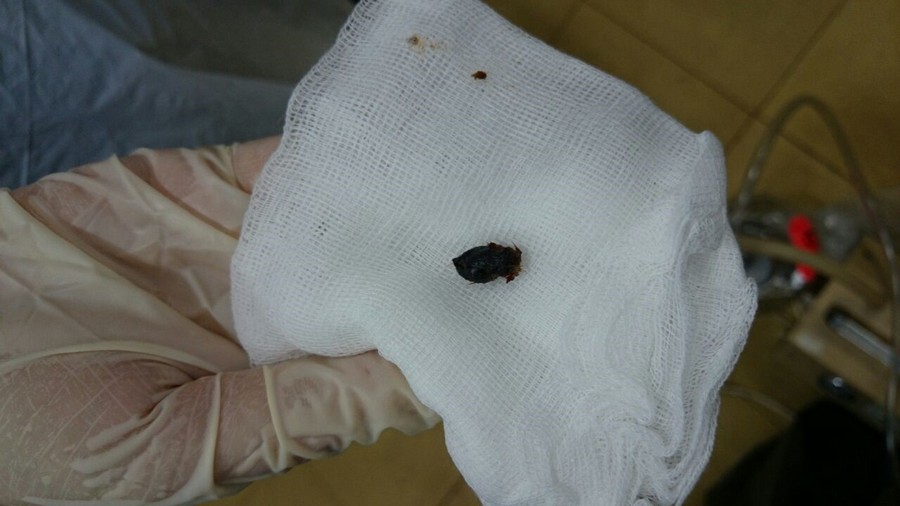
Impacted earwax plug removed from a patient’s ear
Ear Infections and Earwax
Ear infections are quite common and usually present with ear pain, bleeding, ear blockage or smelly ear discharge. Digging one’s ears to try to remove earwax is a frequent risk factor for infection as it may lead to injury of the ear canal skin, eardrum or even deeper structures like the hearing bones.
Earwax itself has protective properties as it contains natural oils to coat the ear canal skin, so the ear does not have to be totally clean. In fact, the ear is actually a self-cleaning device as the skin lining the ear inside tends to migrate outwards to move most wax away from the inside.
Sometimes, wax does become trapped inside the ear due to the type and nature of wax, and shape of the ear canal. In these cases, a few drops of clean olive oil applied inside the ears can help to soften the wax to make it easier for wax to flow out on its own. If this does not work, then a visit to the Ear Nose Throat specialist is helpful to allow gentle cleaning of trapped wax and any infected debris with special tools under the microscope.
Ear infections may also lead to eardrum perforations (“holes”) and cause a persistent ear discharge and hearing loss. This can sometimes occur after a bad cold.
After careful cleaning of the ear, some antibiotic ointment may be applied or eardrops may be prescribed to treat the infection fully. Simple advice to avoid ear infections are to stop digging one’s ears and to keep the ears dry e.g. at showertime. Eardrum perforations which do not heal by themselves may need to be repaired with surgery to prevent further infection.
